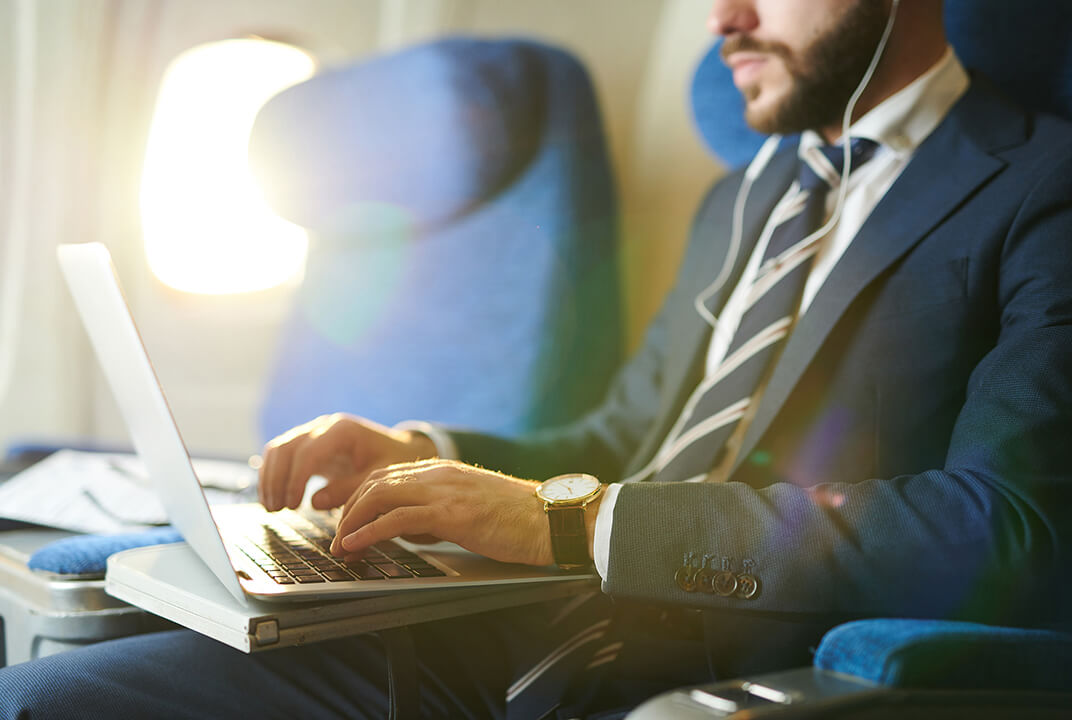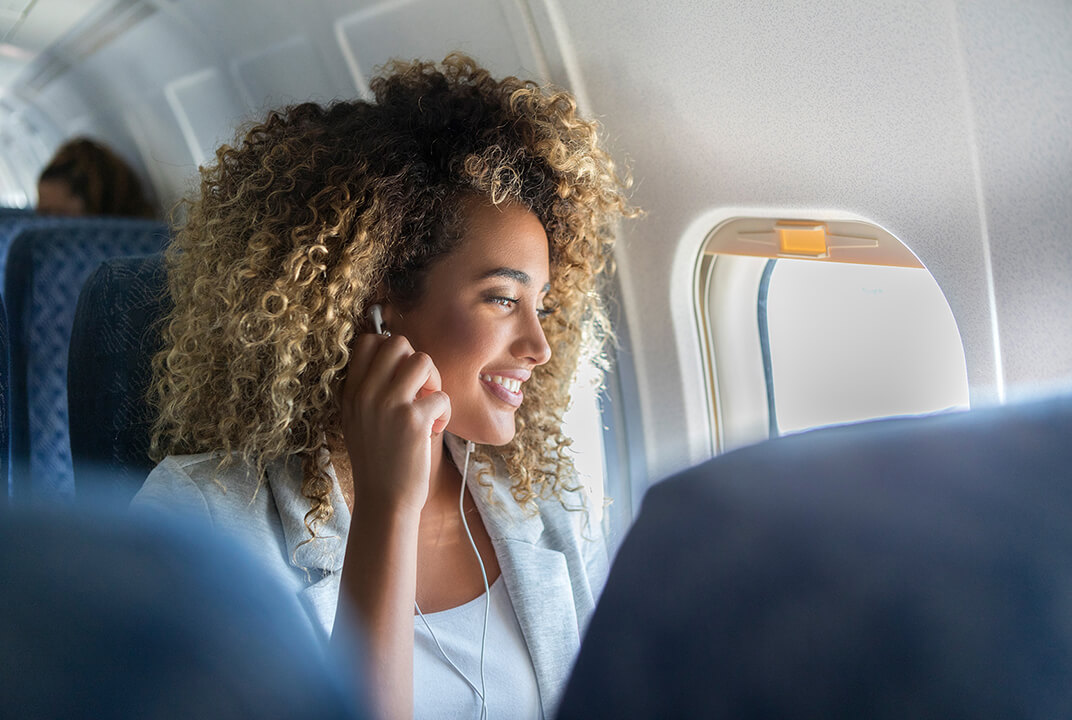Insight | The inside story on Lufthansa Group’s inflight connectivity service
The inside story on Lufthansa Group’s inflight connectivity service
null
Discover how Lufthansa and Inmarsat are partnering to deliver the future of inflight Wi-Fi
20 October, 2015. The announcement was only 250 words long, but it would have huge implications. It began: “Inmarsat has signed a contract to provide high-speed inflight connectivity services for passengers onboard Lufthansa’s European continental fleet.” It went on to explain that 150 Lufthansa aircraft would be equipped with Inmarsat’s Global Xpress technology, with additional aircraft to be added in due course.
But what was important was that this was a partnership. Lufthansa is one of the world’s leading digital airlines. It would bring to the project its technical knowledge, as well as a deep understanding of passenger experience and preferences. Inmarsat would offer its unrivalled expertise in leading and implementing a connectivity project of this kind.
Related service
Big ambitions
As with any project, it was important for joint goals to be set from the start. The main objective was to deliver and launch the airline industry’s foremost inflight connectivity experience, which would ultimately generate additional revenues, drive passenger satisfaction and increase passenger retention. Everyone involved was aware that this was an ambitious project, which would be driven through several different, yet complementary, work streams.
Talking tech
Getting a prototype aircraft up and running to help achieve STCs was a major priority. “We are talking about up to 300 aircraft to be equipped in the next two-and-a-half to three years. So this is really a huge campaign,” is how Lufthansa Technik’s director of aircraft modification Michael Zeisig described the daunting technical task that lay ahead, with Austrian Airlines and Eurowings now also added to the mix.
"We are talking about up to 300 aircraft to be equipped in the next two-and-a-half to three years. So this is really a huge campaign"
Work began at Lufthansa Technik’s MRO bases, and in June 2016, the first installation was completed – on a Germanwings A319 – and the work was then extended to Lufthansa and Austrian Airlines’ A319, A320 and A321 aircraft. All of the aircraft needed to be retro-fitted with Honeywell JetWave hardware and achieve the required regulatory certification. As Lufthansa Technik established the protocols for each aircraft type, they managed to cut installation time down to just four days, in parallel with an aircraft’s scheduled maintenance plan. This fast turnaround is a huge achievement, setting the standard for this sort of fit-out.
"A powerful multi-functional connectivity solution that is unparalleled in global aviation"
The partnership with Lufthansa Systems provided the technical infrastructure to enable internet connection on board, with Deutsche Telekom acting as internet service provider. This included the network operation in the aircraft, bespoke software development to support Lufthansa Group’s IFC onboard portals, and the extension of the local architecture out to the wider Inmarsat network. The result? “A powerful multi-functional connectivity solution that is unparalleled in global aviation,” according to Bernd Freckmann, Vice President, Base Maintenance Services at Lufthansa Technik.
The project also included the tailoring and integration of Inmarsat’s advanced reporting and analytics framework, to provide the airline with critical systems performance and passenger usage data.
"We can provide this kind of service and provide the whole retail proposition and management for them"
Early on in the process, a joint Lufthansa Group/Inmarsat working group, the Connectivity Marketing Team (CMT), was established to define the passenger proposition. Thanks to its considerable experience in this area, Inmarsat became the lead integrator in the partnership.
“A key concern for a lot of airlines is that connectivity is not their core game,” says Asbjorn Christoffersen, VP Airline Connectivity Management at Inmarsat. “So it’s very helpful for them that we can provide this kind of service and provide the whole retail proposition and management for them. This is where airtime as a commodity is translated into something tangible – user experience, retail revenues, everything that the airline wants to get out of it. It is how the airline can position itself as something its competitors are not. The retail proposition is not just about making money, it’s also about making the passengers feel happy about the airline,” he added.
The CMT decided on an innovative, multi-tiered retail model to encourage trial and maximise take up. Lufthansa passengers could try the service free of charge for up to 10 minutes, before choosing one of three Wi-Fi packages (FlyNet Message. FlyNet Surf and FlyNet Stream) with varying connection speeds. The model provides low cost access for low bandwidth users, whilst managing overall capacity across the aircraft.
The team also managed the design and development of the bespoke onboard passenger portal, integrated with Lufthansa’s existing BoardConnect platform, enabling inflight access, registration and payment.
Spreading the word
The CMT later extended its role to cover launch communication and passenger marketing. The focus was on targeted demand generation across a wide range of media, to make sure the right message reached the right target audience. Based on detailed analysis of the passenger journey, and consistent with Lufthansa’s high level brand positioning, the multi-channel communications plan includes passenger CRM, gate and on board activity, PR, social media and Lufthansa Group’s mobile apps.
Testing, testing...
The first Lufthansa Group test flights began in summer 2016, and subsequently equipment was installed on a small test fleet of Lufthansa, Austrian Airlines and Eurowings aircraft. Constant review and performance optimisation meant that a consistent, high quality service could be established.
In the latter stages of the evaluation phase, passengers were able to enjoy the service free of charge. Their response was exceptional, as demonstrated by customer feedback and social posts.
“Inflight Wi-Fi with Austrian Airlines. Perfect,” was a typical Facebook post. “Free Wi-Fi onboard Austrian Airlines! Great fun!” tweeted another satisfied customer. An aviation journalist on a Lufthansa test flight also tweeted the following: “My speedtest numbers on this @Lufthansa @inmarsatglobal GX flight are solid. Now to use it for real.”
Going live
For Lufthansa, the connected revolution has truly begun. From a fast fit of equipment to increased customer satisfaction and retention, together with a revenue boost, this future-proofed global connectivity solution is an apt fit for a company that can comfortably lay claim to being one of the world’s leading digital airline groups.


